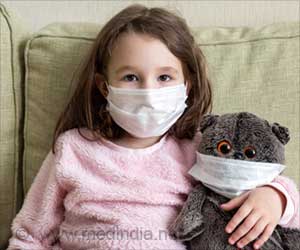“It’s important to stress that this kind of reaction to the Oxford/AstraZeneca vaccine is very rare,” said Dr Sue Pavord, consultant haematologist at Oxford University Hospitals NHS Foundation Trust and lead author of the analysis published in the
.
But for those who do develop blood clots, the results “can be devastating,” she added. “It often affects young, otherwise healthy vaccine recipients and has high mortality. It is particularly dangerous when the patient has a low platelet count and bleeding in the brain.”
“It can affect anybody,” added Beverley Hunt, medical director of Thrombosis UK and professor of thrombosis and haemostasis at King’s College London.
Half of the patients in the analysis had no previous medical illness, and there appeared to be no particular individual risk factors for the syndrome, Hunt said.
Vaccine-induced immune thrombocytopenia and thrombosis (VITT) – killed 23% of the cases analyzed. This risk of death increases significantly to 73% in patients with a very low platelet count and brain bleeds after blood clots in the brain, they said.
VITT is similar to the condition sometimes reported in patients treated with the blood thinner heparin, but it seems to be “more aggressive than what we were familiar with,” said Pavord.
VITT is based on five criteria, including onset of symptoms 5 to 30 days after vaccination, a low platelet count, and documented presence of a blood clot.
These cases appear to be only associated with the Oxford/AstraZeneca jab, the researchers also said.
“We’ve kept an open mind,” said Dr Catherine Bagot, consultant hematologist at Glasgow Royal Infirmary, and senior clinical lecturer at the University of Glasgow. “The Pfizer vaccine has not – for the cases that we are aware of – been able to meet the definition either of a confirmed case or a probable case.”
The Joint Committee on Vaccination and Immunization (JCVI) recommended people under the age of 40 be offered an alternative to the Oxford/AstraZeneca vaccine where possible while infection rates remain low, after reports of very rare blood clots after first shots of the vaccine.
In the 220 confirmed and probable VITT cases in the analysis, ages ranged from 18 to 79 years, with a median of 48 years. About 85% were under the age of 60, despite most of the elderly population having been vaccinated.
But this does not mean the Oxford/AstraZeneca vaccine should not be given to the under-60s, Pavord said.
“If there’s high prevalence of COVID, more people are likely to end up infected and in critical care, and if they’re over-60, more likely to die. In that case, it makes sense to give Oxford/AstraZeneca to everybody. But when there’s a lower prevalence of COVID, an age limit would be appropriate, she said.
“What is absolutely crucial to consider is the bigger picture – and that is the risk of COVID is much greater for the older age groups.”
Source: Medindia



